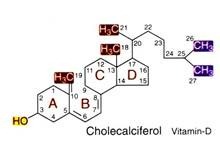In this article we will discuss about the biosynthesis of various types of nucleotides:- 1. Pyrimidine Nucleotides 2. Purine Nucleotides.
1. Pyrimidine Nucleotides:
Biosynthesis of pyrimidine nucleotides begins with condensation of a carbamyl residue of carbamyl phosphate with aspartic acid to produce carbamyl aspartate and inorganic phosphate. Carbamyl aspartate is dehydrated and cyclized to dihydro-orotic acid which is next dehydrogenated by an NAD-linked dehydrogenase to yield orotic acid.
Orotic acid then reacts with 5-phosphoribosyl pyrophosphate (PRPP) to give rise to orotidine 5-phosphate by elimination of the pyrophosphate group. By decarboxylation of orotidine 5-phosphate, uridine 5-phosphate is obtained. Other pyrimidine nucleotides, like cytidine 5-phosphate and thymidine 5-phosphate, are derived from uridine 5-phosphate.
The biosynthetic pathway of uridine 5-phosphate or uridine monophosphate (UMP) or uridylic acid is shown:
Other pyrimidine nucleotides are synthesized from UMP, but for this conversion, UMP is further phosphorylated in two steps by ATP to form UTP. From UTP, cytidine triphosphate (CTP) is produced by direct amination mediated by ATP. UTP and CTP act as precursors in RNA synthesis.
In DNA, the pyrimidine nucleotides are d-CMP and d-TMP and they are deoxyribonucleotides. Deoxyribonucleotides are generally synthesized by direct reduction of 2′-carbon of ribose moiety in which NADPH2 acts as a hydrogen donor. However, the reduction is a complex reaction, requiring thioredoxin which is first reduced by NADPH2 and the reduced derivative reacts with ribonucleoside diphosphates to produce the corresponding deoxyribonucleoside diphosphates.
Thymidylic acid, which occurs as deoxythymidylic acid only in DNA, is synthesized from deoxy- UMP by methylation catalysed by thymidylate synthetase, the methyl group is donated by methylene- tetrahydrofolate.
The de-oxy-monophosphates of pyrimidine nucleosides are converted to triphosphate by phosphotransferase reactions using ATP as phosphate donor. The triphosphates, like d-CTP and d-TTP act as precursors in DNA synthesis for incorporation of d-CMP and d-TMP, respectively, in the polynucleotide chain.
2. Purine Nucleotides:
The purine ring consists of a six-membered pyrimidine ring joined to a five-membered imidazole ring. Normally, there are two purine nucleotides in both RNA and DNA, adenylic acid and guanylic acid, though their sugar’ components differ in RNA and DNA. The origin of different atoms of a purine ring was established through use of labeled compounds.
The compounds which contribute to the components of a purine ring are:
It can be seen that N-l comes from the amino group (-NH2) of aspartic acid. Carbon atoms 2 and 8 originate from formic acid carried by tetrahydrofolate. Nitrogen atoms 3 and 9 come from the amide nitrogen (-CONH2) of glutamine. Carbon atom 6 is contributed by CO2 and carbon atoms 4 and 5 and N-7 come from glycine (CH2NH2COOH).
Biosynthesis of purine nucleotides begins with formation of 5-phosphoribosyl 1-pyrophosphate (PRPP) from ribose 5-phosphate by addition of a pyrophosphate group from ATP. PRPP then reacts with glutamine, whereby the amino group of the amide displaces the pyrophosphate group of PRPP to yield 5-phosphoribosylamine. Glutamic acid and pyrophosphate are liberated.
In the next step, a glycine molecule is added to the amino group of phosphoribosyl-amine producing glycinamide ribonucleotide. The addition of glycine requires the hydrolysis of ATP to ADP+Pi. Glycinamide ribonucleotide then takes up a formyl group from methenyl-tetrahydrofolate to form formylglycinamide ribonucleotide.
The formyl group is added to the amino group of glycine. Formyl glycinamide ribonucleotide then receives another amino group from glutamine through an ATP driven reaction forming formyl glycinamidine ribonucleotide with liberation of glutamic acid, ADP and inorganic phosphate. Next, a five-membered imidazole ring is formed by elimination of a molecule of water.
This step also requires ATP hydrolysis. The product of this dehydration reaction is amino imidazole ribonucleotide. The following step involves a carboxylation reaction yielding amino imidazole carboxylic acid ribonucleotide. Next, an amino group from aspartic acid is added to the carboxyl group producing amino imidazole carboxamide ribonucleotide. The last carbon atom (C-2) is then added contributed by formyl tetrahydrofolate.
Ring closure through dehydration produces the completed purine nucleotide molecule which is inosinic acid. It is the parental purine nucleotide from which adenylic and guanylic acids are synthesized in different pathways.
The pathway leading to inosinic acid is shown next:
(i) Biosynthesis of adenylic acid:
Adenylic acid or AMP is synthesized from inosinic acid via an intermediate, adenylosuccinic acid.
Through this step an amino group is added in C-6 position of the purine ring donated by aspartic acid which is released as fumaric acid and adenylic acid is produced as shown:
(ii) Biosynthesis of guanylic acid:
Guanylic acid or GMP, the other purine nucleotide is also produced from inosinic acid. Guanylic acid is synthesized via an intermediate, xanthylic acid which is an oxidized product of inosinic acid. Xanthylic acid is then aminated by glutamine at C-2 position to produce guanylic acid.
(iii) Biosynthesis of ATP and GTP:
AMP and GMP produced in the above pathways are phosporylated to ATP and GTP in two steps catalysed by phosphokinases.
Similarly, AMP is phosphorylated in two steps to produce first ADP and then ATP.
The triphosphates are used as precursors of nucleic acid synthesis.








